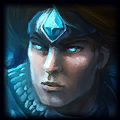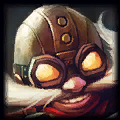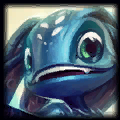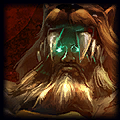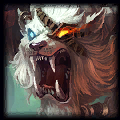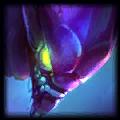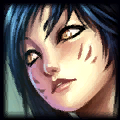The entry point for League of Legends is relatively low compared to other games, and while the skill ceiling is quite high, there are very few that can safely attest to having reached it. Most players that manage to win consistently, premade and solo, are simply those who have a solid working understanding of the fundamentals, and then execute accordingly.
Last Hitting
The most commonly preached on concept,
Last Hitting, is the act of dealing the killing blow to a creep, and only the killing blow. The logic is basic, if you only last hit, you get optimal gold while putting yourself at minimal risk. But last hitting is more than just the killing blow, to quote a very competent member of the GameReplays community -
Last hitting a minion does not mean using an ability to kill it, auto attacking it down, or killing it at 250 health as opposed to 50 health. For example, if you have 250 damage, and there's a minion you want to kill that has 150 health, don't kill it! Wait till its health gets till about 50-25 health, then last hit it. In the laning phase this is huge, if you "last hit" a minion too early you'll end up pushing your lane. The better you get at last hitting minions, the better you're off as a player, because if you're not pushing your lane, you can call for a gank. Similarly, if you're not pushing your lane, you're much harder to gank. You generally become a better player because of those two factors.
Zone Control
Zone Control is another oft harped on aspect of League of Legends. While most of the mechanics involved should go without saying, for the sake of thoroughness, we will cover most of the topic.
Zone Control is influence over space. A champion is able to influence the space in the effective range in which they can exert force, be it though damage via auto attack and abilities, or Crowd Control and non damaging abilities that force or block off space to enemies.
Control through DamageA champion's auto attack is the most basic form of area control. They pose a threat equivalent to their auto attacks damage output for however long a reach the auto attack is. Attack Damage oriented Ranged champions have the highest amount of built in Zone control, for obvious reasons.
Control through AbilitiesAbilities can have a huge impact on area influence. Any given ability that does damage adds to the effective range of a champion's Zone. Examples are Kog` Maw's Bio Arcane Barrage which adds extra damage and range to his auto attack, Kassadin's Null Sphere which is a ranged nuke on a melee champion, and abilities like Nasus' Spirit Fire which is a Damage over Time land spell.
Crowd Control and Area Deny'sThe same rules as damaging abilities applies to any type of Crowd Control ability. The range at which a slow or stun is usable adds to the effective range of a champion. The minor tweak in the rule is that often times the Crowd Control itself won't add damage, and it's influence is entirely relative based on what your enemies can follow up with. The best example is when dueling with a Taric or Sion. Both have targetable single stuns with very low initial damage. You will negate any real control the CC gives them if it they can't close the gap while you are disabled. This means that a duo lane can ignore a certain amount of area influence exerted by CC abilities if the potential damage or vulnerability taken on in the act of closing outweighs the damage potential. Keep this in mind when dealing with CC lanes. A duo with high innate Zone Control can have more influence than an enemy CC lane, and thus be relatively safe.
Another way to zone is with abilities that block space. This includes Anivia's Wall, Trundle's spire, and soft walls like Karthus' Wall of pain or Malzahar's silence. These abilities have either no immediate impact or require the enemy to be forced into them to have individually noticeable affects. What they do, is deny access to space, and have the ability to cut enemy zone influence in half.
Relative ControlThe best example of this are character's with closing abilities such as sprints and blinks. If a champion has zone control based on abilities, he only maintains that control when said abilities are off cooldown. For the entire 3 seconds Kassadin doesn't have null sphere, he has less zone control and can be pressured.
Factors that exaggerate relative control are flash skills. Any champion with a flash adds that distance to any one of it's other abilities of influence. Using Kassadin again, once six, you need to double his area of control as he can Riftwalk and then follow up with his Null Sphere, doubling the area of influence of his Null Sphere.
Using Brush to Negate InfluenceLosing line of sight on Champions completely negates any type of influential forces that rely on a specific target, such as auto attacks and targetable abilities. To close gaps, or create gaps, use brush against character's dependent on sight to exert influence.
Spells and abilities that give sight negate this as well, so remember to use Clairvoyance and Hawk Shot abilities to ensure your influence remains optimal.
Applying and Staying SafeWhen in lane, and even in team fights, have a basic grasp of area influence of factors in play(be they Towers, Minions, Baron Nashor, or multiple Champions), and before committing to any type of fight or skirmish determine who has the most influence over the space where said conflict will occur. Make it a rule to never engage when the enemy has more potential influence. Use brush, towers, and initiating CC to make the numbers roll in your favor.
Discuss this
guide in our Forums!

